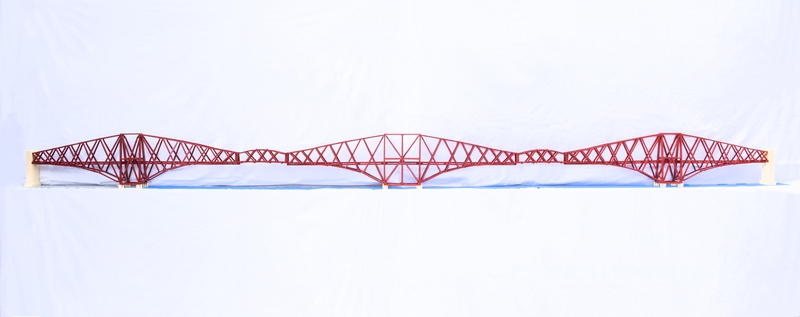
A Scottish civil engineer has reached the halfway mark in a competition to create a new product for Lego.
Michael Dineen has accumulated over 5000 votes on his proposal for the Forth Bridge to be produced as a lego set. A further 5000 supporters will be needed for the firm to consider it.
As part of his submission, Michael created a 1.45 metre replica of the bridge using Lego blocks. Taking four months to complete, he described it as a ‘complex’ structure that required various different parts to make.
On his product idea page, Michael wrote, “Building this model can help educate people about some of the principals of bridge design with a focus on what a balanced cantilever bridge is. This will then offer an insight into how the Forth Bridge was built.”
He continued by telling how he had to paint the individual Lego pieces used for the bridge deck, hinges and ball joints in dark red to fully replicate the Forth Bridge.
If Lego gives the proposal the green light, the set will include parts to build the bridge’s main tower, both sides of the balanced cantilever, two half of the suspended section, associated deck and one small end tower. To build the entire bridge, Michael said that three boxes of the product would need to be purchased.
“I built my bridge out of pride and passion. I’m incredibly proud to live in a country that is home to one of the greatest and most iconic structures around the world,” Michael wrote on his reasons for submitting the structure.
Continuing, “I love to educate and inspire others about Civil Engineering and have built this model to do just that. With few Lego bridge sets currently available, I see this as an opportunity for Lego to add a different offering to its fans.
“Many people share my passion for this bridge and feel this is an incredible structure, so unique in design that it’s never been replicated anywhere. Not only is it immense fun to build, but it would complement a shelf in any room in the house.”
He added that the model could help ‘promote’ science, technology, engineering and mathematics subjects amongst children and within schools, while also highlighting the importance of world heritage sites.
To view and vote on Michael’s submission, click here.











